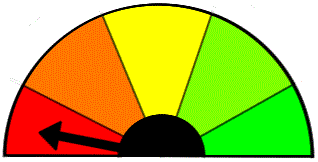Long John Silver'sLong John Silver's uses Monosodium Glutamate, Hydrolyzed Proteins, Autolyzed Yeast, Extracts, Disodium Guanylate, Disodium Inosinate, and many more nasty ingredients in their batter, sauces, and soups.
Long John Silver's has a list of ingredients available in pdf form here:
http://www.ljsilvers.com/images/pdfs/LJS_Customer_Ingredient_List_February_2014.pdfI have put the items we should be concerned with in
bold type.
Batter
Wheat Flour (May be Bleached and Enriched with Niacin, Reduced Iron, Thiamin Mononitrate,
Riboflavin, Folic Acid), Corn Starch, Yellow Corn Flour, Salt, Monosodium Glutamate, Spices (Including
Paprika), Leavening (Sodium Bicarbonate, Sodium Aluminum Phosphate, Monocalcium Phosphate),
Garlic Powder, Natural Flavoring, Guar Gum, Spice Extract.
Contains: WheatBreaded Clam Strips**
Clams and Natural Clam Juice, Bleached Wheat Flour, Soybean Oil, Modified Food Starch, Salt,
Leavening (Sodium Bicarbonate, Sodium Aluminum Phosphate, Monocalcium Phosphate), Contains 2%
orless of the following: Rice Flour, Spices, Partially Hydrogenated Soybean Oil, Dextrose, Sodium
Tripolyphosphate, Monosodium Glutamate, Water, Hydrolyzed Wheat Gluten, Yeast, Lactic Acid,
Autolyzed Yeast Extract, Bonito Extract, Buttermilk, Artificial Flavor. Contains: Clams, Wheat, Milk Baja Sauce
Soybean oil, water, egg yolks, distilled vinegar, salt, contains less than 2%of sugar, garlic*, lime juice
concentrate, egg yolk solids, spices, monosodium glutamate, lactic acid, xathan gum, sodium benzoate and
potassium sorbate (as preservatives), onion*, paprika, natural and artificial flavors, calcium disodium EDTA
added to protect flavor. *dehydrated
Contains: EggBroccoli Cheese Soup
Water, Broccoli, Pasteurized Processed Cheese Spread [American Cheese (Milk, Cheese Culture, Salt,
Enzymes), Water, Whey, Sodium Phosphate, Whey Protein Concentrate, Skim Milk, Salt, Milkfat, Artificial
Color], Onion, Creaming Agent (Partially Hydrogenated Soybean Oil, Corn Syrup Solids, Sodium Caseinate a
Milk Derivative, Mono and Diglycerides, Sodium Citrate, Salt, Dipotassium Phosphate, Carrageenan),
Cream, Margarine (Soybean Oil, Partially Hydrogenated Soybean Oil, Water, Salt, Nonfat Dry Milk,
Soybean Lecithin, Mono and Diglycerides, Sodium Benzoate added as a preservative, Artificial Flavor,
Colored with Beta Carotene, Vitamin A Palmitate), Contains less than 2% of the following: Modified Food
Starch, Cold Pack Cheese [Cheddar Cheese (Pasteurized Milk, Cheese Culture, Salt, Enzymes), Water, Salt,
Apocarotenal (color), Oleoresin Paprika (color)], Flavor (Wheat Flour, Partially Hydrogenated Soybean Oil),
Cream Base (Clarified Butter Oil, Partially Hydrogenated Soybean Oil, Modified Food Starch, Sweet Cream
Solids, Corn Syrup Solids, Salt, Mono and Diglycerides, Flavorings with Annatto and Turmeric, Xanthan
Gum, Sugar, Disodium Inosinate, Disodium Guanylate, Natural Tocopherol to protect flavor), Salt, Chicken
Base [Cooked Mechanically Separated Chicken, Salt, Sugar, Maltodextrin, Hydrolyzed Corn Gluten, Chicken
Fat, Whey, Chicken Flavor (contains Salt, Acid Whey Powder, Yeast Autolysate, Sweet Whey Powder,
Hydrogenated Soybean Oil, Water, Lactose, Spice Oleoresins, and Oleoresin of Turmeric), Onion Powder,
Turmeric, Disodium Inosinate and Disodium Guanylate, Xanthan Gum, Spice Extractive], Natural Flavor
(Maltodextrin, Modified Butter Oil, Salt, Dehydrated Butter, Shortening Powder, Guar Gum, Sodium
Bicarbonate, Annatto and Turmeric for color), Emulsifier (Mono- and Diglycerides with TBHQ and Citric
Acid added to protect flavor), Natural Flavor (Cream and Enzymes), Propylene Glycol Alginate, Spice,
Lecithin, Red Pepper Sauce (Vinegar, Aged Red Pepper, Salt), Xanthan Gum, Annatto Color (Propylene
Glycol, Purified Annatto, Mono- and Diglycerides, and Potassium Hydroxide), Paprika Oleoresin (Refined
Soybean Oil, Natural Extractives of Paprika).
Contains: Eggs, Milk, Soy, Wheat Green Beans – Seasoned
Green Beans, Onion, Salt, Monosodium Glutamate, Spice, Maltodextrin, Soybean Oil, Garlic.SayNOtoMSG.com Conclusion:
 Long John Silver's is a Red Zone Restaurant.
Long John Silver's is a Red Zone Restaurant.Go here at your own risk.
Personally, breathing the air while driving by one of their restaurants would be too much.

 Recent Posts
Recent Posts